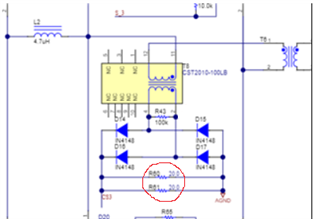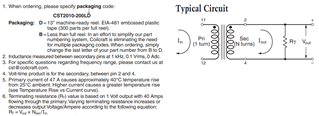
Hello there,
I saw a resistor between seconder side of current transformer. I was wondering the reason for using this. Could you please explain this.
This thread has been locked.
If you have a related question, please click the "Ask a related question" button in the top right corner. The newly created question will be automatically linked to this question.

Hello there,
I saw a resistor between seconder side of current transformer. I was wondering the reason for using this. Could you please explain this.
I believe this can be answered by taking a look at the typical circuit diagram from the current sense transformer's Datasheet. It recommends using a termination resistor to adjust the ratio of Vout to Iin.

Regards,
Cody
I am sorry, There is a misunderstanding because of me. Let me correct.
I would like to ask that 20 ohms which have been paralleled before the rectification diode.
I think this would be there to ensure that the power can quickly be bled off. I would call this a burden resistor. However I was not involved in this design, the normal owner is on leave, so please allow me a day or so to look at why this was done.
Regards,
Cody
I was unable to get a response. My assumption, which could be wrong, is that this was done as a way to discharge the rectified power. Without some load the response would not happen quickly enough to sample accurately. My believe is that when the sampled current is reducing the rectified voltage would lag behind as it slowly floated down from its previous level without this load.
Regards,
Cody